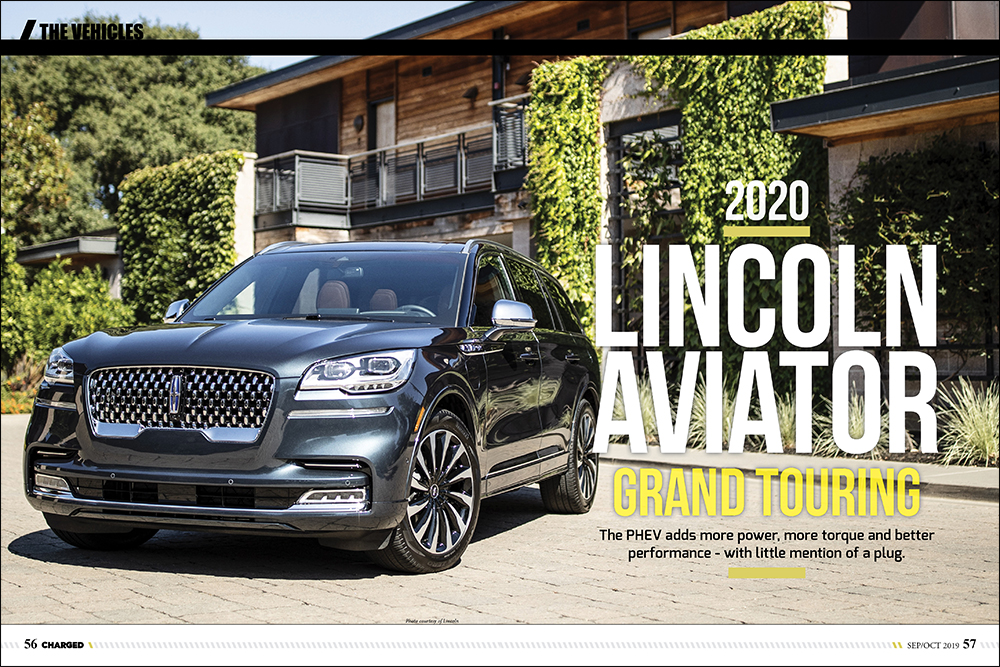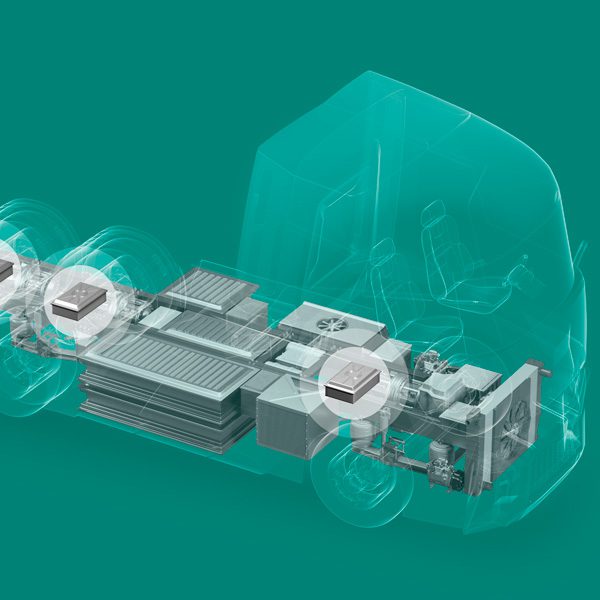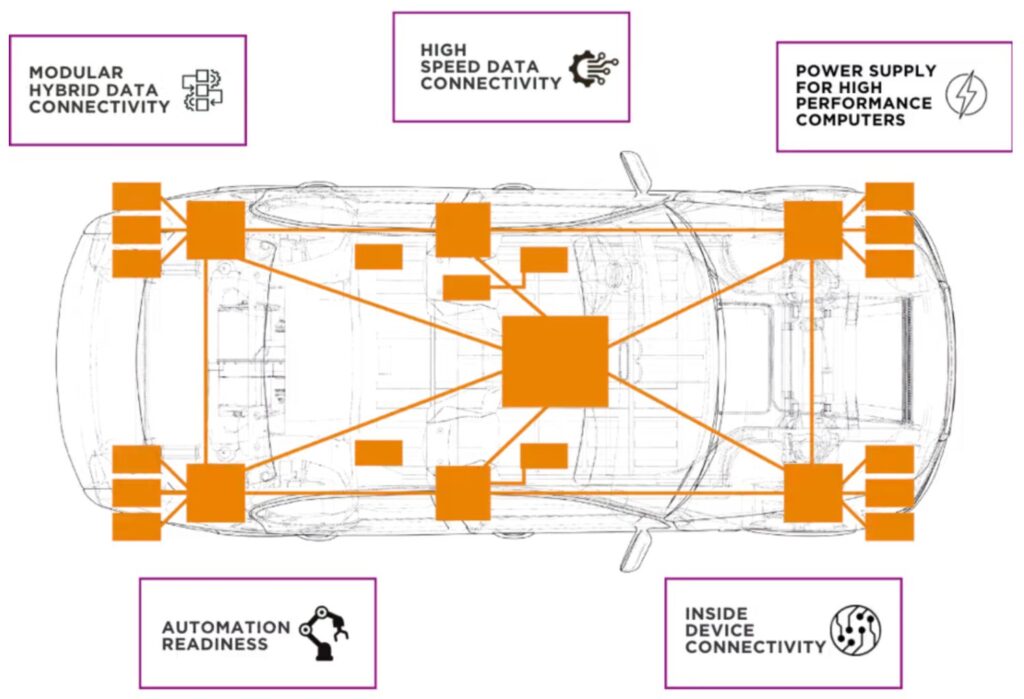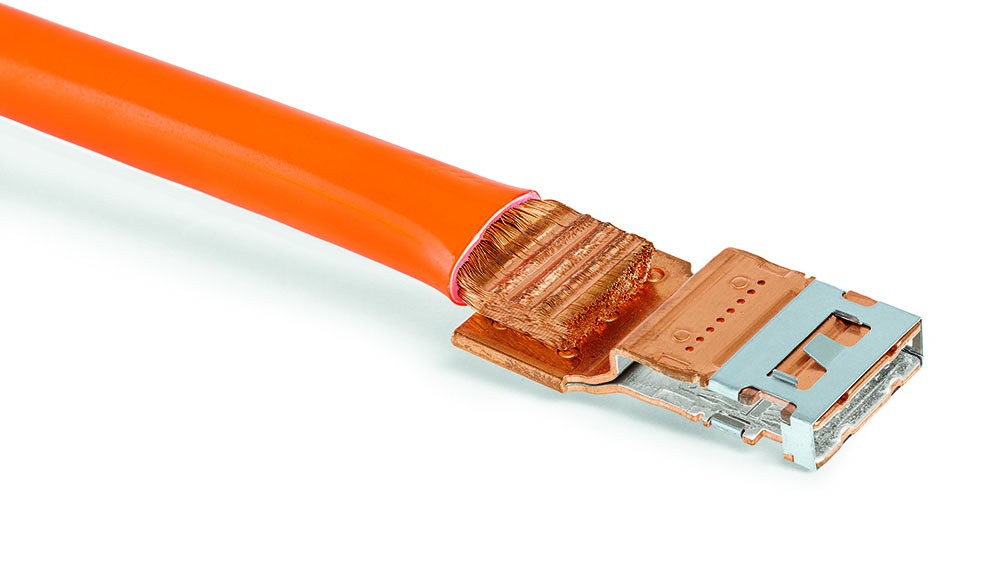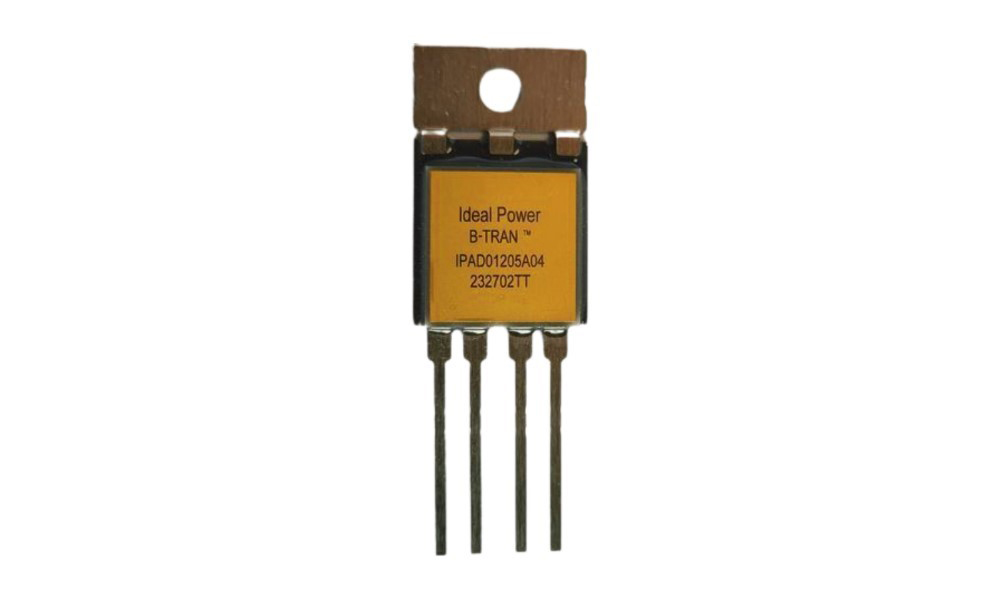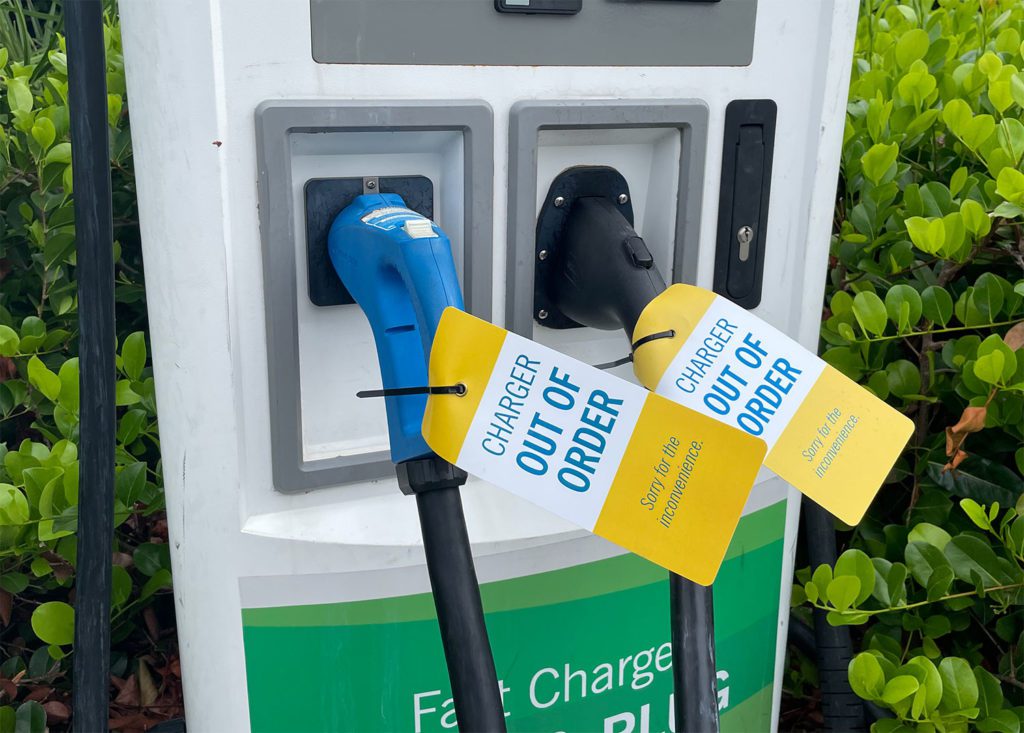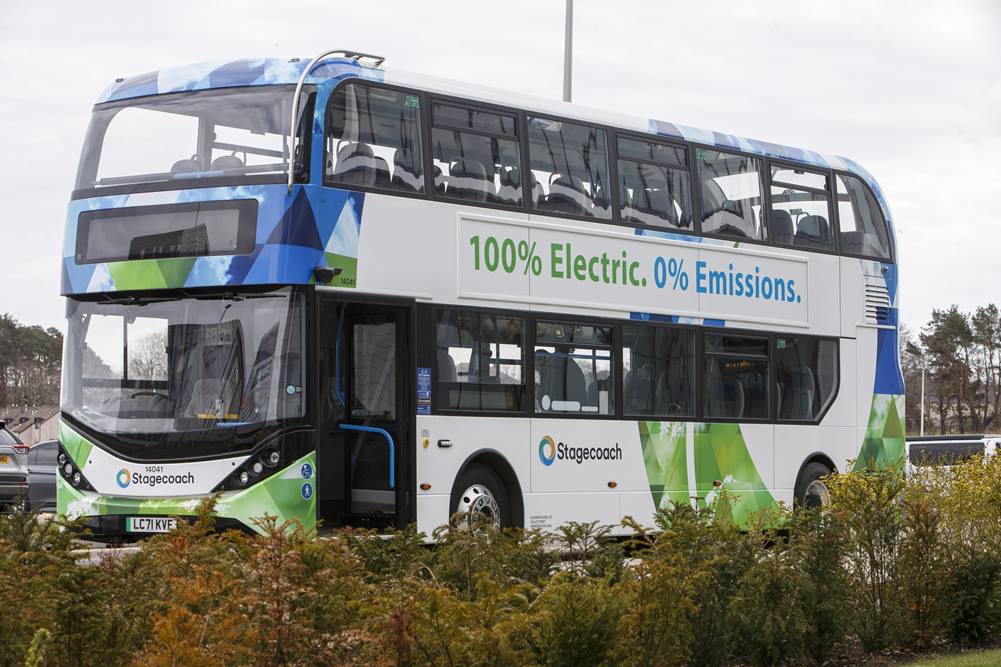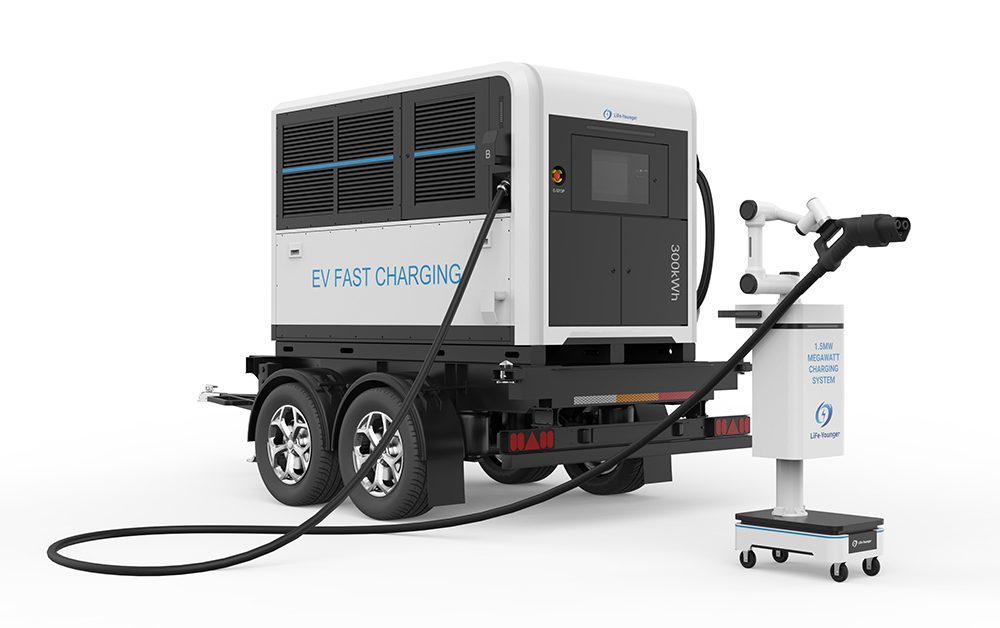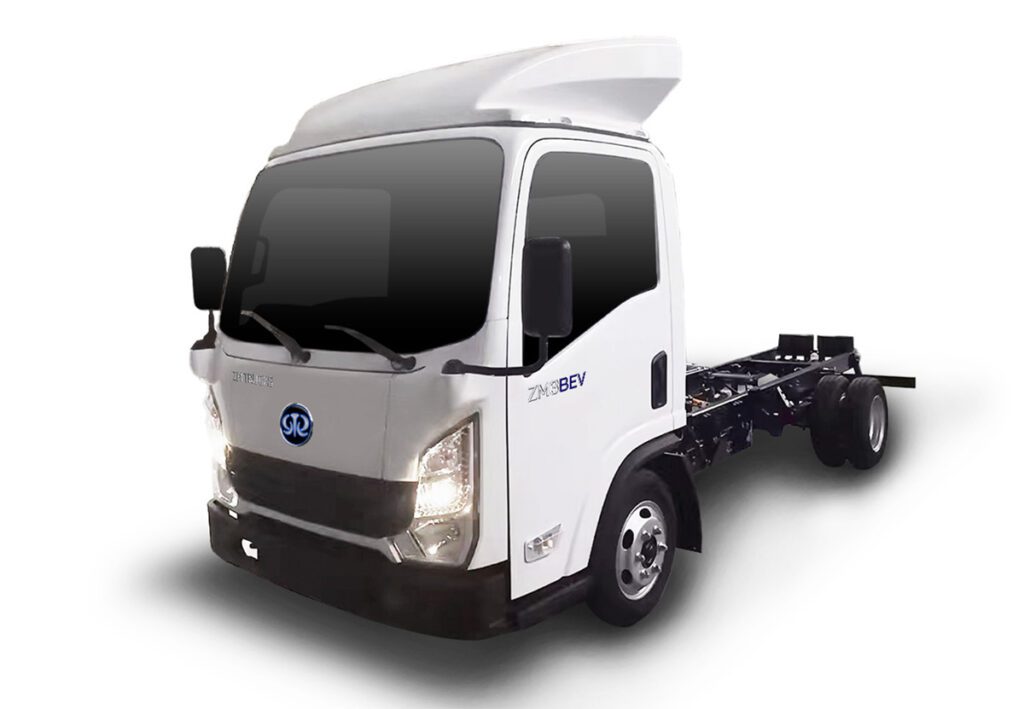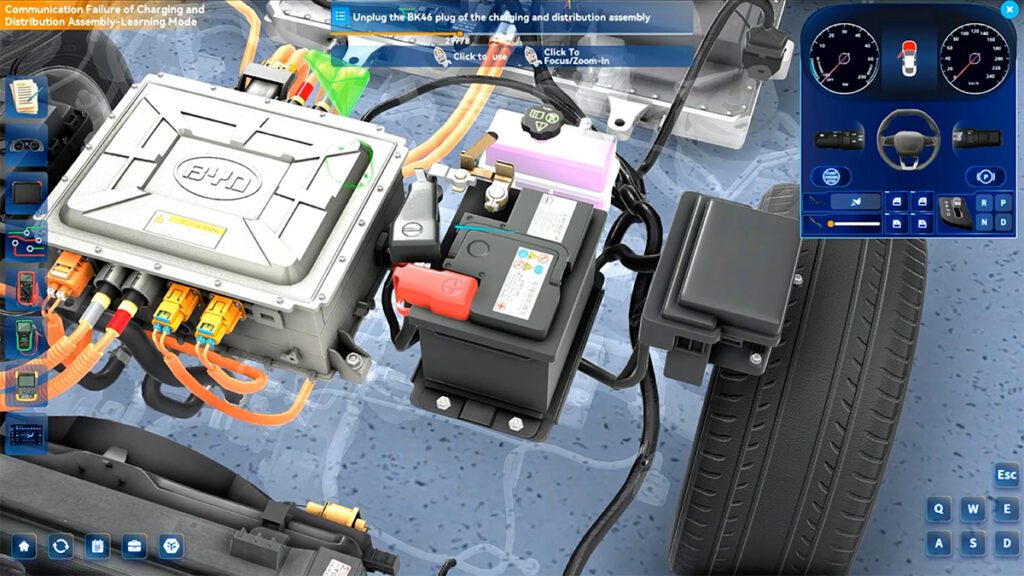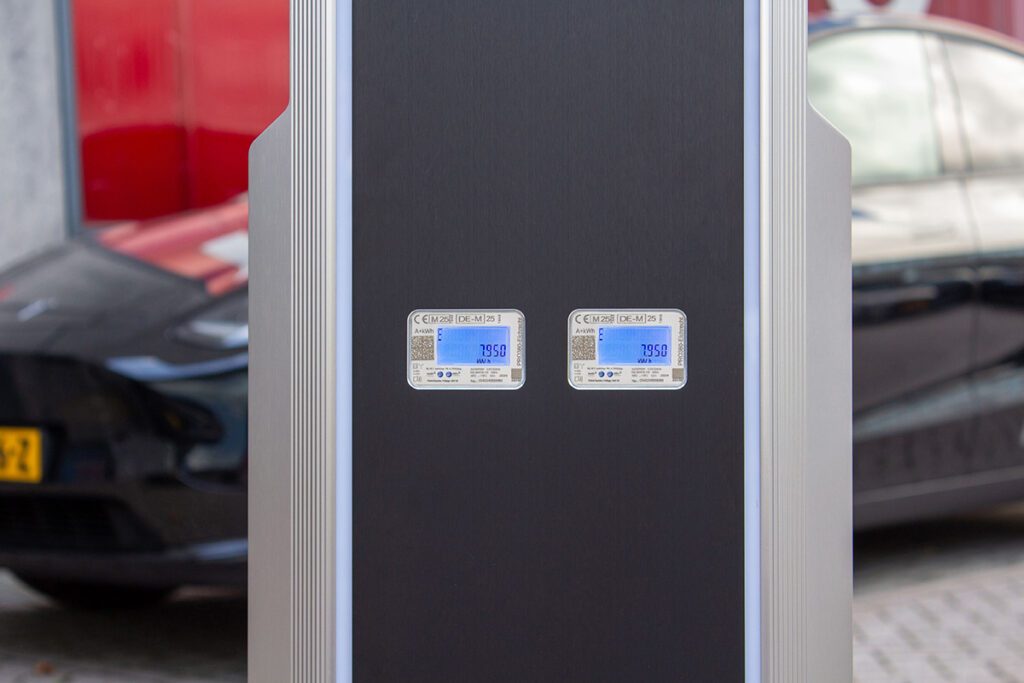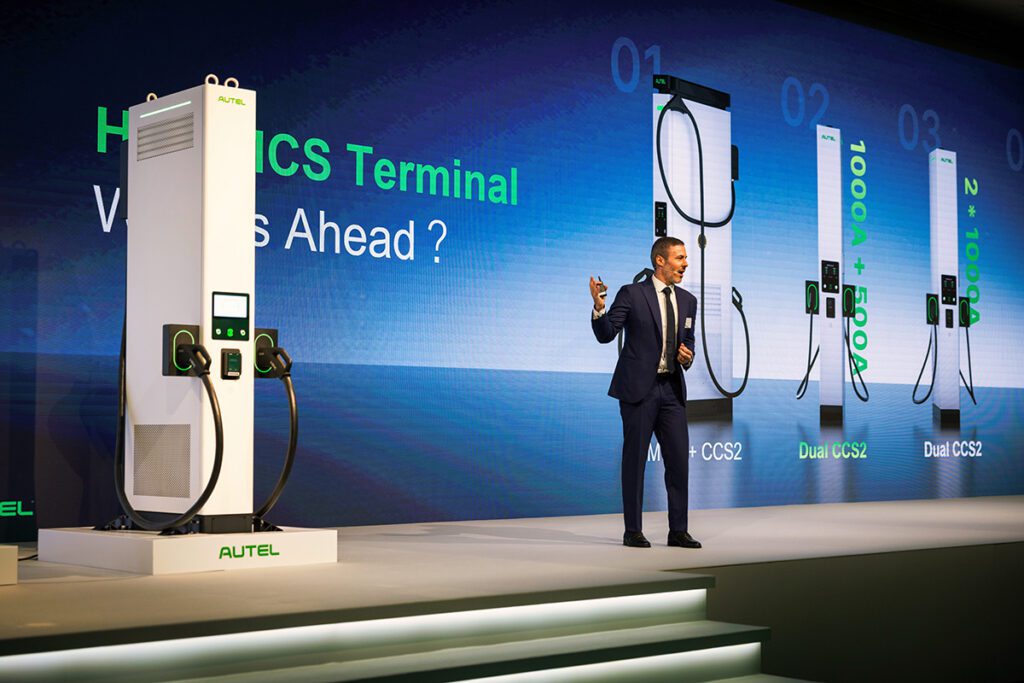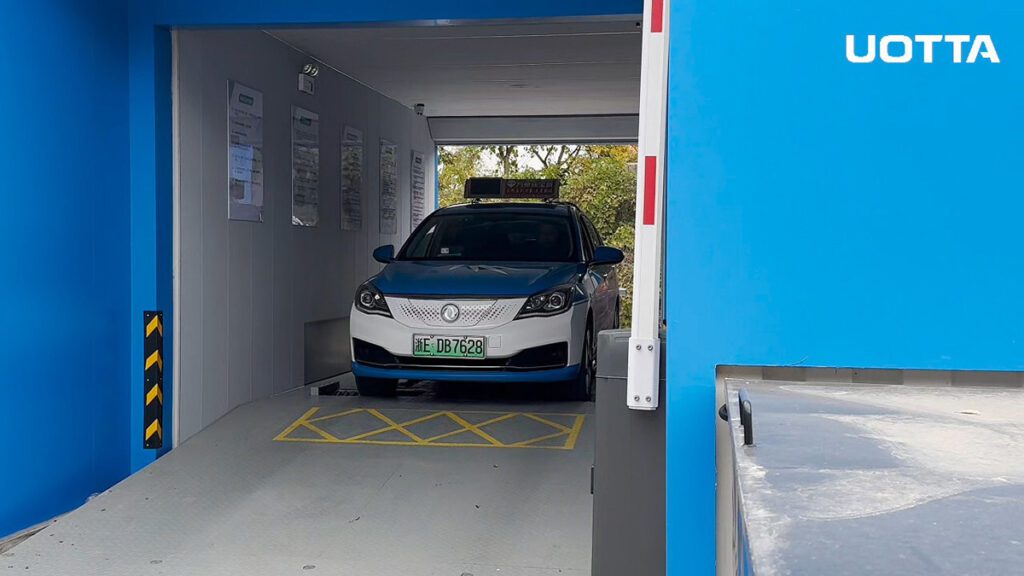The PHEV adds more power, more torque and better performance – with little mention of a plug.
It’s a brutal truth: in key coastal markets like California and the Northeast, the Lincoln brand has all but vanished from any discussion of luxury vehicles. In fact, Lincoln execs admit it outright.
Like crosstown rival Cadillac, Lincoln has struggled to break the hammerlock hold on hearts and minds enjoyed by the German trio of Audi, BMW and Mercedes-Benz, along with Lexus, Volvo and a few other brands. Note that luxury makes now sell as many utility vehicles in the US as they do traditional sedans, so SUVs now outweigh those sedans in importance and profits.
However, Ford has had a good long think about what Lincoln should be, and its first new utility vehicle has now emerged from that process. It’s the Aviator, a mid-size three-row luxury SUV that sits below the hulking Navigator in the lineup, and revives a name that the brand used briefly a decade ago.

The Aviator shares brand-new underpinnings with the latest Ford Explorer, though Lincoln engineers take pains to detail some of the hundreds of changes made to the suspension, powertrain, and dozens of other mechanical aspects so the Lincoln would be suitably luxurious. And, for the first time, Lincoln is offering a plug-in hybrid version of one of its vehicles. This version of the Aviator has no Explorer counterpart in the US (A plug-in hybrid Ford Explorer is built in their shared Chicago assembly plant, mind you, but it’s intended only for European buyers. It can’t be ordered in North America.)
Plug? What plug?
There’s just one problem with the Aviator Grand Touring, as the plug-in model of the new SUV is known: Lincoln doesn’t plan to say much about the plug to actual buyers – if anything at all.
The word “plug” didn’t appear in product information or marketing materials shown to editors on an August launch drive event. A fact sheet did have a single photo showing a charging cord plugged in. The test vehicles we drove came with fully charged batteries, but did not include portable charging cords – and Lincoln staff said not a word about recharging, plugging in, or how any of that might be accomplished. Those are usually standard parts of any plug-in hybrid launch.
Instead, Lincoln presents the battery, electric motor and power electronics solely as a way to add more power, more torque and better performance. The Grand Touring is essentially offered as a pricier, higher-performance engine option on the mid-range and top trim levels of the Aviator.
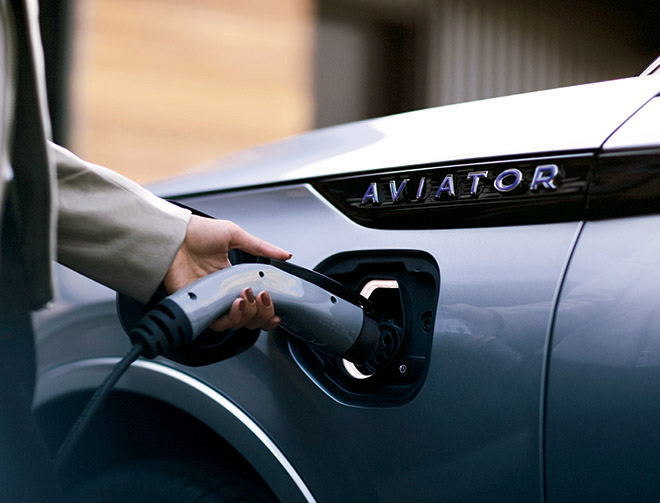
A template for future Lincoln styles
The Aviator is the first all-new Lincoln sport utility in several years, so it offered designers a chance to show off what the reborn brand intended to be. The designers of the larger truck-based Navigator that preceded the newer vehicle could only add a limited number of Lincoln styling cues to the basic shape and package of the equally massive Ford Expedition.
The Aviator shares no sheet metal with the square-cut Ford Explorer. Commendably, it steps back from the massive, hulking Navigator in style, with a roofline that descends toward the rear, and a sloped tailgate. The front end, with the latest grille that ties together all new Lincolns, is restrained and elegant. It won’t make other drivers nervous when it looms in their rear-view mirrors, which we think is a good thing.
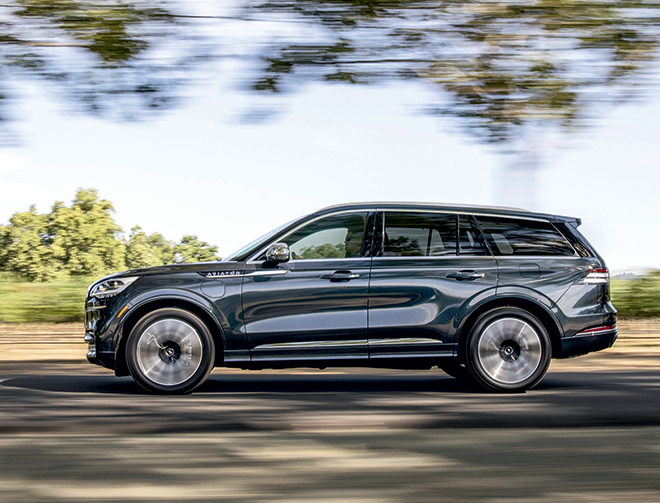
Inside, a large horizontal screen sits above a low dash with chunky, chrome-trimmed vents and switchgear. Most controls sit in the angled console below, with a row of paddles for gear selection between them. Front seats are well-bolstered, comfortable, and almost infinitely adjustable. The second row is suitably comfortable, and while the third row will accommodate full-size American adults who can climb back into it, it’s better suited to children and athletic teens.
The top trim level, known as Black Label, offers a quiet profusion of stitched leather upholstery, wood trim if you want it, and more features than we can even begin to list. The top-of-the-line massaging seats alone would require a couple of paragraphs to describe properly.
The overall effect is quiet, confident American luxury, to adapt language often used by Lincoln executives. The brand isn’t trying to out-German the German makes, but to offer an alternative. The result is quietly appealing, without the bling of top Cadillacs or the slightly severe mien of an Audi or BMW.
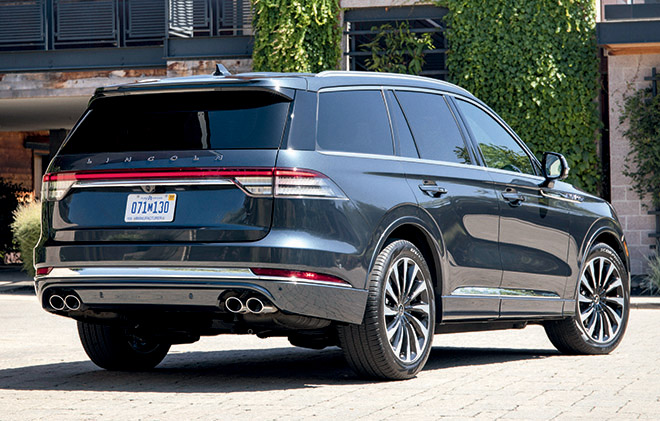
Big SUV, big power
Both Aviator powertrains use a 3.0-liter twin-turbocharged V-6 engine, driving either the rear or all four wheels through a 10-speed conventional automatic transmission. The difference in the plug-in hybrid Grand Touring model is that a 75 kW (101 hp) electric motor is sandwiched between the engine and transmission. (Lincoln stresses that 90 percent of the transmission’s parts are shared between the two variants.)
The plug-in Aviator is powered by a 13.6 kWh lithium-ion battery pack under the right-hand rear cabin floor and seat, containing 96 pouch cells from LG Chem. That pack is liquid-cooled and heated as necessary, unlike the air-cooled batteries in Ford’s earlier hybrid vehicles.
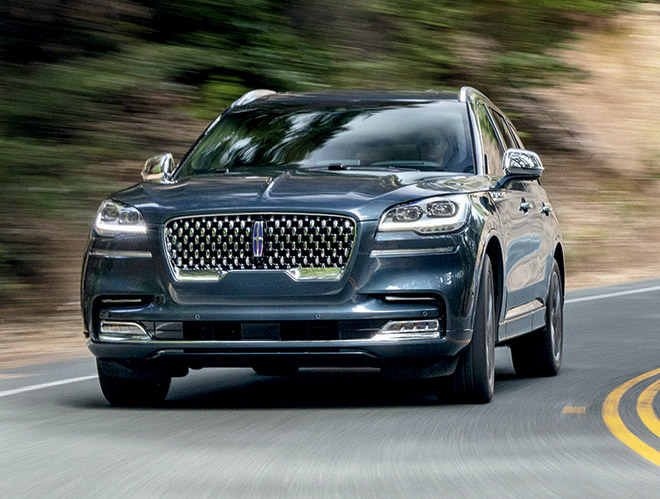
The Lincoln marketing staff sped quickly through charging times and didn’t specify a rating for the onboard charger, though it’s likely 6.6 kW. A conventional Level 2 charging station will take 3 to 4 hours to recharge a depleted battery, and it’ll be 6 to 10 hours on a household 120-volt circuit.
Lincoln scored a bit of a PR coup in August with the peak performance ratings for the Grand Touring: a combined 494 hp (at 5,500 rpm) and 640 lb-ft of torque (at 2,250 rpm). Those are big numbers, certainly better than the standard Aviator’s 400 hp and 475 lb-ft.
Oddly, though, the extra weight and general complexity of the Grand Touring didn’t particularly aid the sense of faster acceleration. We think either version will be just fine for the affluent suburban families who will be the likely buyers of Aviators.
18 miles of range or so
As for other specifications, Lincoln execs expect the battery range to receive an EPA rating of around 18 miles. But they didn’t offer estimates of its efficiency in all-electric mode, which the EPA measures in MPGe, or Miles Per Gallon Equivalent: the distance a vehicle can travel electrically on the energy contained in one gallon of gasoline. We saw an indicated 14 miles of range from our full battery, though to be fair to Lincoln, the heat reached 104° F during the test. That required more energy to keep the interior air-conditioned – and the Aviator has a large interior.
Out of that 14 indicated miles, we got 11 miles in pure electric mode before the engine switched on.
All Aviators offer five drive modes: Normal; Conserve, effectively an eco setting to reduce fuel consumption; Excite, which keeps the engine running at higher speeds in lower gears for faster performance (and enhances the engine sound so occupants know it); Slippery, for conditions of low traction; and Deep Conditions, which on air-suspension Aviators increases ground clearance and aggressively monitors torque to each wheel. The vehicle automatically activates a Tow/Haul mode when it detects a trailer.
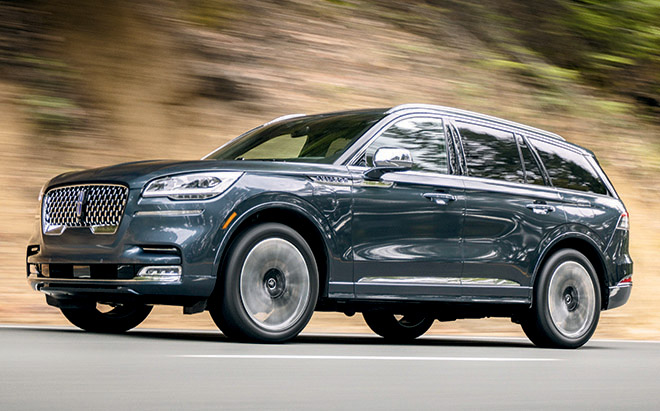
The plug-in hybrid adds two more drive modes. Pure EV keeps the SUV in all-electric drive up to at least 70 mph, though its acceleration isn’t nearly as fast as the combined gas/electric mode; and Preserve EV not only retains battery energy but adds to it, using engine charging on overrun to a maximum of about 70 percent of capacity.
In old-fashioned EPA fuel economy terms, the plug-in hybrid’s projected rating is 23 mpg combined. That’s only a 10- to 15-percent improvement on the standard Aviator’s ratings of 21 mpg combined with rear-wheel-drive, or 20 mpg if you want all four wheels powered.
The Grand Touring comes with a tow rating of 5,600 pounds, a respectable number but substantially below the conventional vehicle, which is rated at 6,700 pounds.
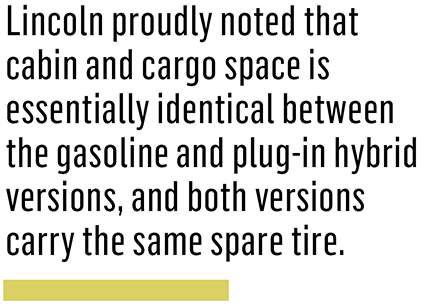
Behind the wheel
Lincoln proudly noted that cabin and cargo space is essentially identical between the gasoline and plug-in hybrid versions, and both versions carry the same spare tire. The weight difference, however, is substantial – about 700 pounds, according to Program Manager John Davis.
That difference is apparent on the road and behind the wheel. All Aviators “drive small,” which is to say they’re easy to place and don’t feel as large as they actually are. That’s helped by the generous glass area, good outward visibility, and the low cowl.
The test route outside Asheville, North Carolina, contained a pleasant set of twisting mountain roads, which demonstrated the Aviator’s composed nature and ample power when pushed. However, in the pre-production vehicles we drove, the gasoline version provided smoother power response and handled coherently for a large SUV.
In the Grand Touring version, some power transitions among the engine, motor and transmission were evident – perhaps made more so by the vehicle’s exceptionally good suppression of noise and vibration, which drew attention to the occasional gentle lurch from below. It’s the great challenge of single-motor hybrid systems: the e-motor can power the vehicle, or act as a generator to charge the battery, or be locked to let the engine power the transmission directly. But unlike the continuous variability of a two-motor system like the ones Ford has used to date, switching among those modes requires a transition. And making the last few percent of those transitions imperceptible is very, very hard – as Hyundai, Kia, and most of the Germans learned in their early single-motor systems.
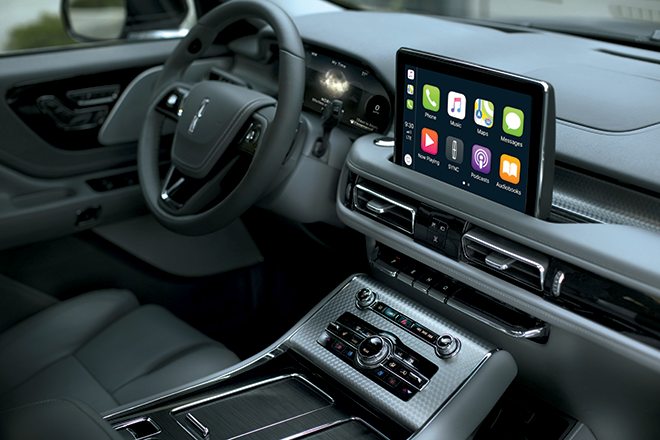
Go for the air
The Grand Touring’s extra 700 pounds of weight is obvious when driving it back-to-back with the gasoline version. While the lighter car seemed exceptionally composed, the plug-in hybrid model was occasionally inconsistent on corners that combined camber changes, power transitions, and bumps or potholes. A bit of fine-tuning may still take place before the Grand Touring hits the streets a few months after the gasoline version.
The ride is best with the optional air suspension, which uses predictive sensing on high-trim models to compensate in advance for choppiness over some types of road-surface imperfections. It works, and we’d recommend it to Aviator buyers. The steel-spring version we drove over lumpy roads conveyed far more road irregularities into the cabin. As always, the largest-diameter tires are the noisiest. Lincoln even fills its 21- and 22-inch tire options with acoustic foam to quiet them.
The 2020 Lincoln Aviator hasn’t yet been tested by either the NHTSA or the Insurance Institute for Highway Safety, so no crash-safety ratings are available. As a family utility vehicle, however, it would be surprising if it achieved anything less than top ratings from one or both organizations.
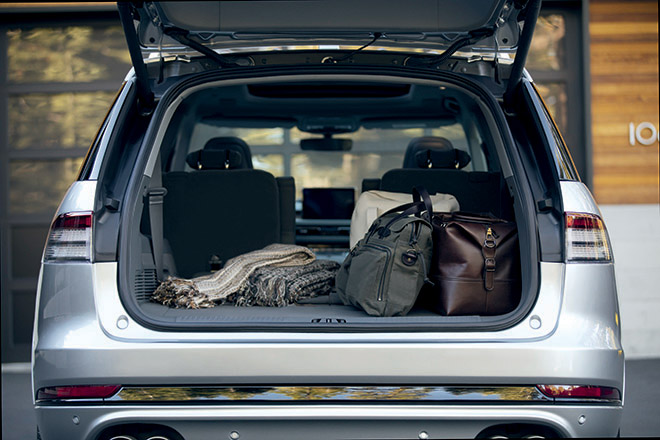
Lots of features
Standard safety equipment includes forward collision warning and automatic emergency braking, active lane control, blind spot detection, and automatic headlights. The Lincoln Co-Pilot 360 suite of features adds adaptive cruise control with traffic-jam assist, lane centering, active parking assist, and automatic reverse braking when needed.
This isn’t the review in which to run down all available equipment, but Lincoln confidently says it matches or beats the competition in luxury and comfort features. Prices for the Standard version start just below $53,000, including delivery, and a top-of-the-line AWD Reserve model runs about $75,000.
The Grand Touring powertrain is available on the Reserve and Black Label trim levels, but not on the bottom-line Standard trim – which Lincoln expects to be only a tiny fraction of overall Aviator sales. It adds roughly $10,000 to the price, though direct comparisons are tricky because Grand Touring versions of either trim level come with more features.

The Aviator may be the best vehicle Lincoln has offered in decades. And offering a plug-in hybrid version brings it neck-and-neck with competitors from BMW, Mercedes-Benz and Volvo, and brings Lincoln into the modern era of electrification.
If any shopper ever learns about it, that is.
This article appeared in Charged Issue 45 – September/October 2019 – Subscribe now.







